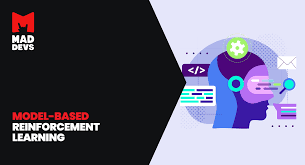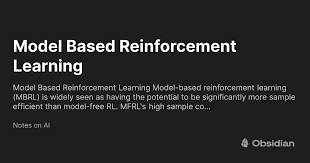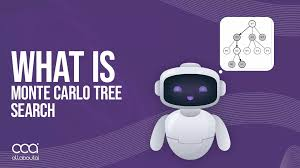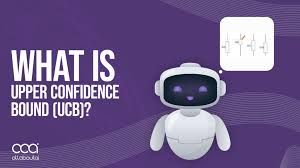comprehensive guide to Model-Based Reinforcement Learning: Exploring Decision-Time Planning 2024
Reinforcement Learning (RL) has been revolutionized by model-based approaches, where an agent learns a model of the environment’s transition dynamics to predict future states and optimize decision-making. Model-based RL contrasts with model-free RL by leveraging knowledge about the environment instead of relying purely on trial-and-error learning.
This guide explores the core concepts, algorithms, and real-world applications of model-based RL.
🔹 What is Model-Based Reinforcement Learning?

Model-based RL involves learning an explicit model of the environment, typically defined as:
- Transition model: P(s′∣s,a)P(s’ | s, a)P(s′∣s,a) — Probability of moving to the next state s′s’s′ after taking action aaa in state sss.
- Reward model: R(s,a)R(s, a)R(s,a) — Expected reward for taking action aaa in state sss.
Once the agent learns these models, it simulates future trajectories and selects actions that maximize expected rewards. This allows efficient decision-making with fewer interactions with the environment, making model-based RL particularly effective in complex and data-scarce domains.
🔹 Key Advantages of Model-Based RL

✅ Efficient Learning: Requires fewer environment interactions than model-free RL.
✅ Decision-Time Planning: Enables on-the-fly trajectory optimization using techniques like Monte-Carlo Tree Search (MCTS).
✅ Transfer Learning: Can generalize across different tasks if the model captures environment dynamics effectively.
✅ Simulation-Based Optimization: Allows agents to “imagine” different strategies before acting.
🚀 Core Algorithms in Model-Based RL
Several powerful model-based RL techniques have been developed. Here, we explore some of the most impactful ones.
1️⃣ Monte-Carlo Tree Search (MCTS)

MCTS is a decision-time planning algorithm used in game-playing AI, robotics, and complex planning tasks. It combines random simulations and tree search to evaluate future action sequences.
💡 How MCTS Works:
- Selection: The algorithm selects the best node (state-action pair) using an exploration strategy like Upper Confidence Bound (UCB).
- Expansion: If a selected node is not fully explored, it adds new nodes by sampling possible actions.
- Simulation (Rollout): Runs simulated episodes from the expanded node to estimate rewards.
- Backpropagation: Updates the tree by propagating reward values to ancestor nodes.
📌 Real-World Example:
MCTS played a pivotal role in Google DeepMind’s AlphaGo and AlphaZero, allowing the agent to simulate millions of Go game scenarios and refine strategies.
2️⃣ Upper-Confidence-Bound (UCB) Action Selection

UCB is a technique used in RL to balance exploration and exploitation. It prioritizes actions with higher uncertainty to systematically reduce unknowns.
Formula:UCB(a)=Qˉ(a)+clogNN(a)UCB(a) = \bar{Q}(a) + c \sqrt{\frac{\log N}{N(a)}}UCB(a)=Qˉ(a)+cN(a)logN
Where:
- Qˉ(a)\bar{Q}(a)Qˉ(a) = Estimated reward of action aaa.
- N(a)N(a)N(a) = Number of times action aaa was selected.
- NNN = Total number of action selections.
- ccc = Exploration factor (higher ccc encourages exploration).
📌 Example:
In multi-armed bandit problems, UCB helps select the best slot machine in a casino with minimal regret.
3️⃣ AlphaGo, AlphaZero & MuZero
These groundbreaking AI models showcase the power of model-based RL combined with deep learning.
🧠 AlphaGo (2016):
First AI to defeat a human champion in Go using MCTS and policy/value networks.
🚀 AlphaZero (2017):
An evolved version of AlphaGo that learns tabula rasa (from scratch) for Chess, Go, and Shogi using self-play.
🔥 MuZero (2020):
A game-changer that learns without environment rules. Instead of being provided with transition dynamics, MuZero models three critical components internally:
- Value function: How good is a state?
- Policy function: Which action to take?
- Reward function: How good was the last action?
📌 Why MuZero Matters:
MuZero outperformed AlphaZero across multiple games without needing predefined environment models, marking a breakthrough in general AI planning.
4️⃣ PlaNet (DeepMind)
PlaNet is a deep planning network that combines latent dynamics models and model-based planning for continuous control tasks.
💡 How PlaNet Works:
- Learns a compact latent space representation of states instead of using raw images.
- Uses model-based planning to make decisions based on predicted trajectories.
- Can transfer learning across multiple tasks without re-training.
📌 Use Case:
PlaNet was tested in simulated environments like pole balancing, humanoid locomotion, and robotic control tasks, achieving state-of-the-art sample efficiency.
🔹 Challenges in Model-Based RL
While powerful, model-based RL comes with challenges: 🚧 Model Inaccuracy: Errors in learned models can accumulate over long planning horizons.
🚧 High Computational Cost: Simulating multiple future states can be resource-intensive.
🚧 Exploration-Exploitation Tradeoff: Balancing between refining the model and exploring new actions remains an open problem.
🛠️ Model-Based vs Model-Free RL: Key Differences
| Feature | Model-Based RL | Model-Free RL |
|---|---|---|
| Learning Approach | Learns environment dynamics | Learns directly from experience |
| Efficiency | Data-efficient (fewer samples) | Requires massive training data |
| Computation | High computational cost | Less computationally expensive |
| Decision Making | Uses planning (e.g., MCTS) | Uses value-based/policy learning |
| Examples | AlphaZero, MuZero, PlaNet | DQN, PPO, A3C |
🔹 Final Thoughts
Model-based RL is a powerful paradigm that integrates environment simulation, deep learning, and planning for efficient decision-making. With breakthroughs like MuZero and PlaNet, AI is moving closer to achieving generalized intelligence capable of solving a variety of tasks.
🔹 Key Takeaways: ✅ Monte-Carlo Tree Search (MCTS) optimizes decisions using simulations.
✅ UCB-based exploration balances learning and exploitation.
✅ AlphaZero & MuZero showcase deep RL’s potential in self-learning AI.
✅ PlaNet demonstrates efficient planning in continuous control environments.
🚀 What’s Next?
With increasing computational power and better world models, model-based RL is set to transform industries ranging from autonomous driving to robotics and healthcare.
👉 How do you see model-based RL shaping the future of AI? Let us know in the comments! 🎯🔥
This blog is structured to be engaging, informative, and SEO-friendly, making it ideal for AI and RL enthusiasts. Let me know if you’d like to refine any section! 🚀